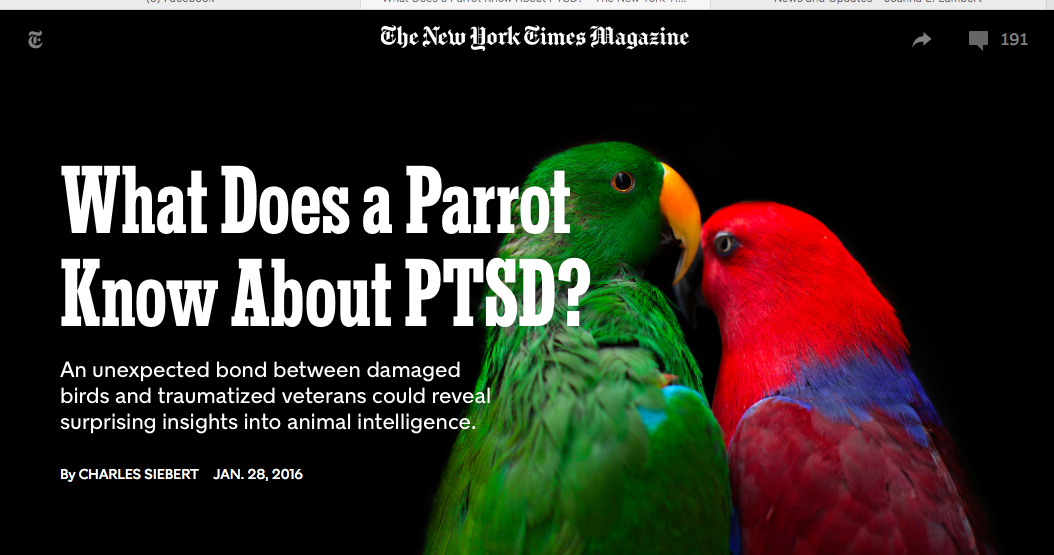Read this gorgeous, enlightening story (What Does a Parrot Know about PTSD, by Charles Siebert) and you’ll never look at birds and mammals in the same way. Simply put, PTSD is not unique to humans.
An excerpt:
“Though the avian cerebrum possesses only the tiniest nub of the structures associated with mammalian intelligence, recent studies of crows and parrots have revealed that birds think and learn using an entirely different part of their brains, a kind of avian neocortex known as the medio-rostral neostriatum/hyperstriatum ventrale. In both parrots and crows, in fact, the ratio of brain to body size is similar to that of the higher primates, an encephalization quotient that yields in both species not only the usual indications of cognitive sophistication like problem-solving and tool use but also two aspects of intelligence long thought to be exclusively human: episodic memory and theory of mind, the ability to attribute mental states, like intention, desire and awareness, to yourself and to others.
Nature, in other words, in a stunning example of parallel or convergent evolution, found an entirely other and far earlier path to complex cognition: an alien intelligence that not only links directly back to minds we’ve long believed to be forever lost to us, like the dinosaurs’, but that can also be wounded, under duress, in the same ways our minds can. In one recent psychiatric study conducted at Midwest Avian Adoption and Rescue Services, a parrot sanctuary and rehabilitation facility in Minnesota, a captive-bred male umbrella cockatoo who had been ‘‘exposed to multiple caregivers who were themselves highly unstable (e.g. domestic violence, substance abuse . . . addiction)’’ was given a diagnosis of complex PTSD. ‘‘When examined through the lens of complex PTSD,’’ Dr. Gay Bradshaw, a psychologist and ecologist and an author of the study, wrote, ‘‘the symptoms of many caged parrots are almost indistinguishable from those of human P.O.W.s and concentration-camp survivors.’’ She added that severely traumatized cockatoos ‘‘commonly exhibit rapid pacing in cage, distress calls, screams, self-mutilation, aggression in response to . . . physical contact, nightmares . . . insomnia.’’
Reference:
Siebert, C (2016) What does a parrot know about PTSD? New York Times Magazine, January 28th.

